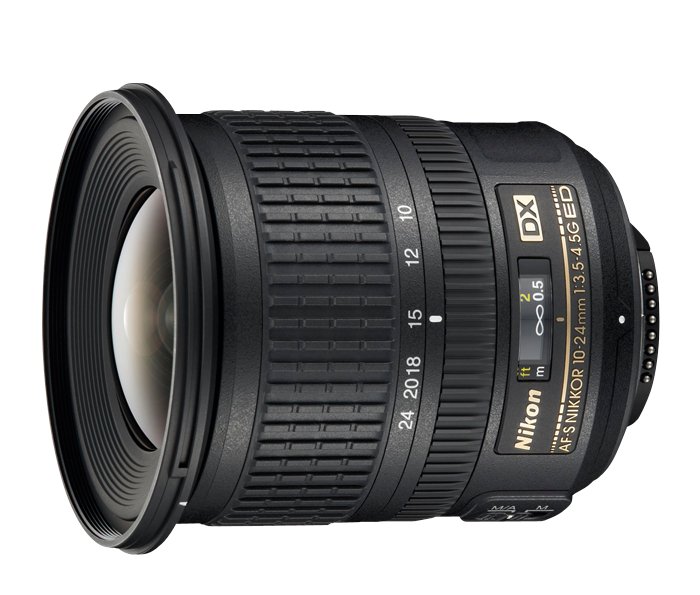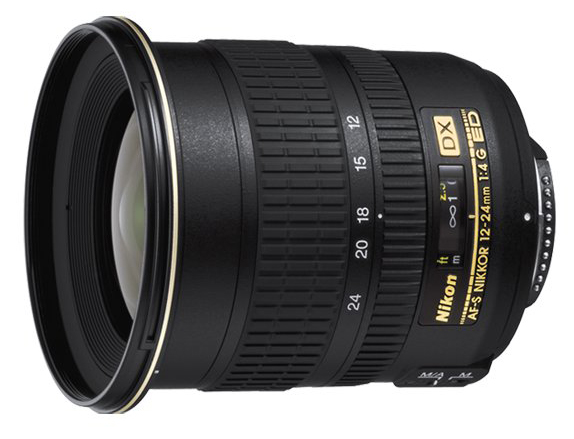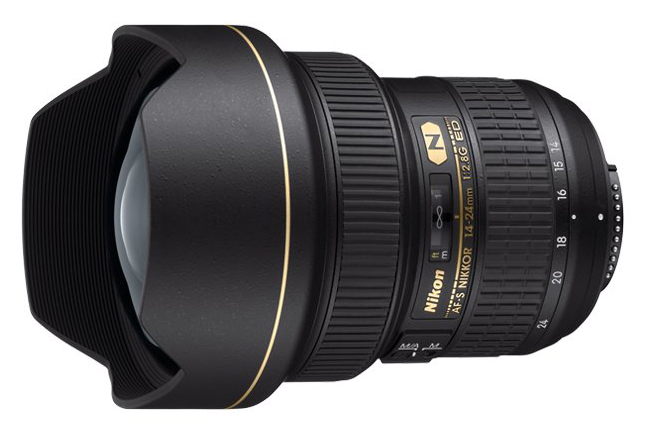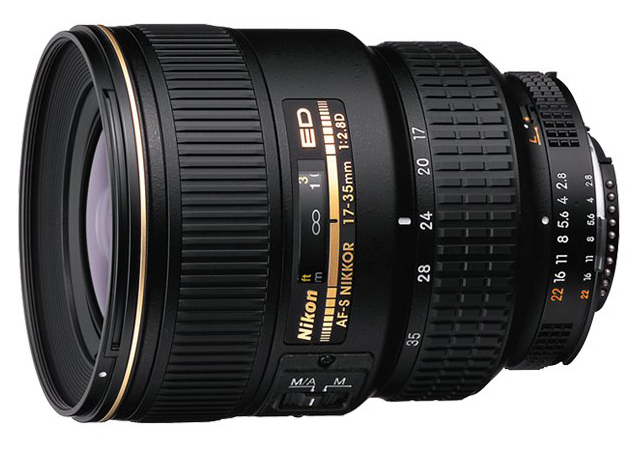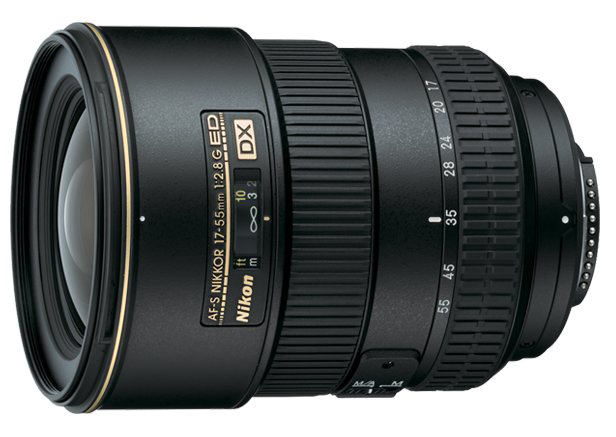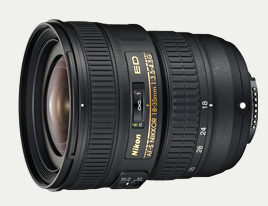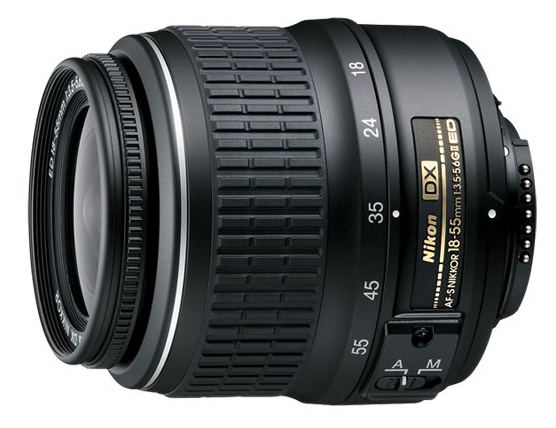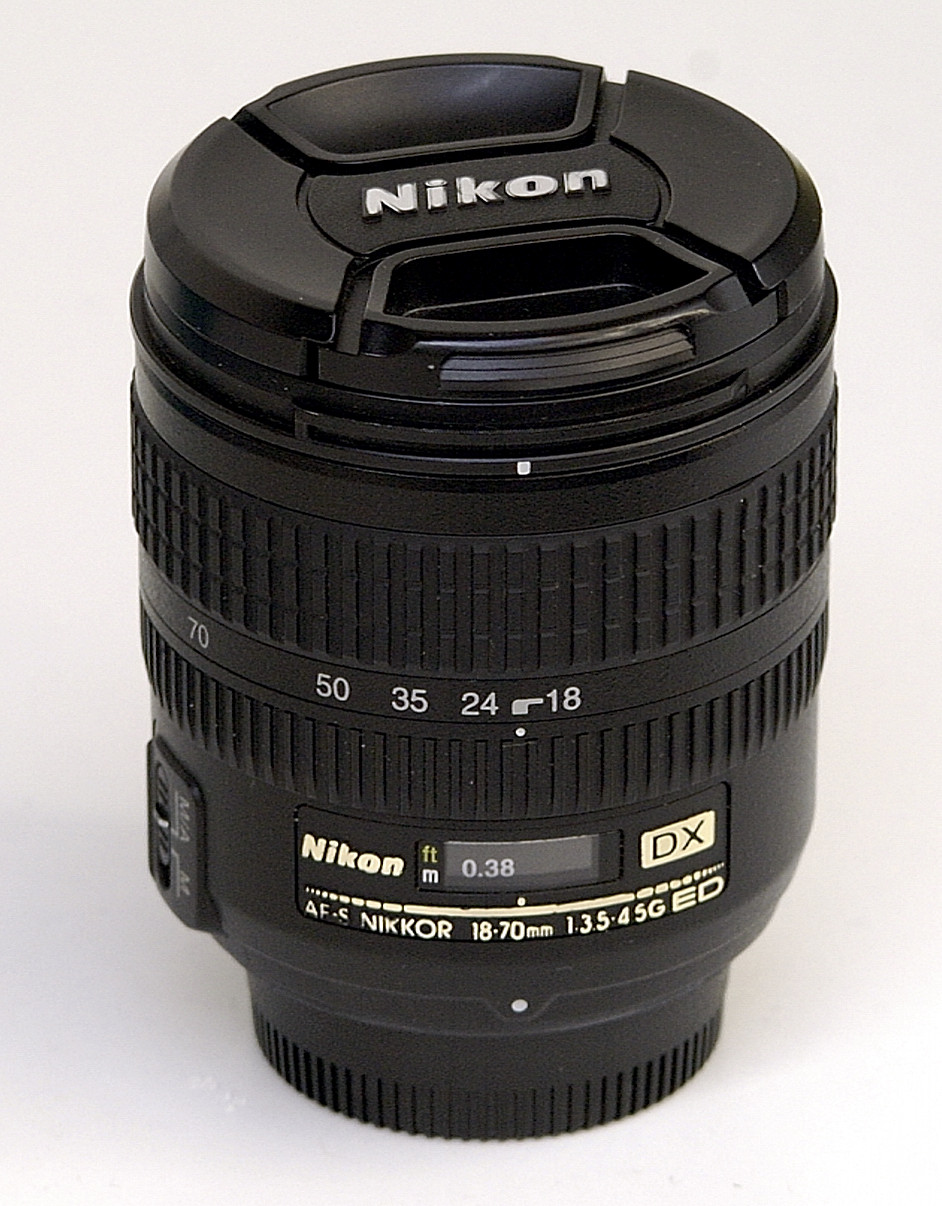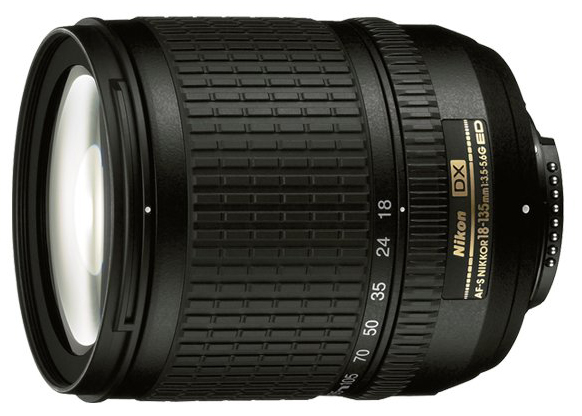Nikkor autofocus wide-angle zoom lenses
For technical specifications see the matrix For lenses in this category with vibration reduction see this chapter
All lenses mentioned here have the latest coating technology (SIC or nano-crystal), internal focusing (IF) and (AF-S only) a built-in focusing silent wave motor. Most of the lenses take filters of 77 mm.
AF-S 3.5-4.5/10-24 mm. G ED DX
Not so long ago this was impossible! Due to the introduction of modern glass technology it is now (from its introduction in April 2009) possible to produce this incredible lens (for DX/format). On any digital reflex camera with a DX sensor this lens will give a view equal to that of a Zoom-Nikkor of 15 to 36 mm.!! If placed on a FX digital reflex camera the lens will give black to dark corners at focal lengths from 10 - 18mm. The optical formula consists of 14 elements (some are aspherical and some are made of ED-glass) in 9 groups. The lens focuses down to 24 cm. and may be used with hood HB-23. At its widest zoom the lens has clear cushion distortion (like fish-eye lenses).
AF-S Nikkor 4/12-24 mm. G IF-ED DX
Introduced in June 2003 this amazing lens with built-in focusing motor, has three aspherical lenses and two lenses made of ED glass as part of an optical system of 11 elements in 7 groups. Beware of the fact that the front and the rear lens are aspherical lenses, thus the most expensive parts of the lens! So take care!! Focusing is possible down to 30 cm., it has a 77 mm filter thread and the best hood is the HB-23. This very nice lens weights in at 465 gram.
AF-S 2.8/14-24 mm. G IF-ED
This superb and fast (f/2.8 at all focal lengths) zoom lens was introduced in June 2003. In its complex optical formula (14 elements in 11 groups) you will find three aspherical elements and two elements made of ED-glass. The lens also features the nano-crystal coating, reducing internal reflections to an absolute minimum. It focuses down to 28 cm. at all focal lengths! It also has a built-in hood. Disadvantage is its weight of nearly 1 Kilo!
AF-S 2.8/17-35 mm. D IF-ED
Introduced in September 1999 this famous reporter's lens is using 13 elements (of which 3 are aspherical and two made of ED-glass) in 10 groups. Even full open at f/2.8 images are razor sharp with very little distortion. Hood HB-23 comes with the lens.
AF-S Nikkor 2.8/17-55 mm. G DX
Nikon introduced this very nice reporter's lens in June 2004. Its optical formula consists of 14 elements (of which three are aspherical and three others are made of ED-glass) in 10 groups. Be careful with the front lens which is an expensive aspherical element!! The lens focuses down to 36 cm. and weights in at 755 gram. The best hood is the HB-31.
AF-Nikkor 3.5-4.5/18-35 mm. D IF-ED This lovely zoom lens is a relatively cheap but very good performer. Its optical formula consists of 11 elements (the second from the front is aspherical and one is made of ED-glass) in 8 groups. The lens focuses down to 33 cm. and weights in at 426 gram. The best hood is HB-23.
In January 2013 Nikon introduced an optically improved successor: AF-S Nikkor 3.5-4.5/18-35 mm. This lens for FX-cameras has an optical formula of 12 elements in 8 groups. 2 elements are made of ED glass and 2 elements have an aspherical shape. AF-S indicates that the lens has the well-known Silent Wave Motor for fast autofocus down to 28 cm. The filter ring is 77mm wide, the best hood is HB-66 and the lens weights in at 385 gram, making it a bit lighter. Drawback is the G-mount which makes this lens useless on older film cameras.
AF-S Nikkor 3.5-5.6/18-55 mm. G ED DX/ II
This very light (some 200 grams) and relatively cheap lens was introduced in October 2005 as mainly a kit lens, sold together with the amateur digital reflex cameras. It has 7 elements (front lens is aspherical and third form front is made of ED-glass) in 5 groups. Performance isn't bad at all, but the lens body is a bit too plastic. Hood is HB-45. The lens is available in silver plastic or black plastic. Early January 2016 Nikon introduced an upgrade of this lens, the AF-P Nikkor, utilizing - as the very first Nikkor - a stepping motor* for faster focusing and using less energy. The upgraded lens has a 'sister' with vibration reduction. Both lenses have an optical formula of 12 elements (of which 2 are aspherical) in 9 groups and can be focused down to 25 cm. The lens without VR weights in at 195 gram, the VR-version is 10 grams heaver. Both lenses may use the HB-N106 hood. Filter thread is 55 mm. *stepper motor or stepping motor is a brushless DC electric motor that divides a full rotation into a number of equal steps.
AF-S Nikkor 3.5-4.5/18-70 mm. G IF-ED DX
This nice travel companion was introduced in March 2004. It has 15 elements (no. 4 from front is aspherical and 3 are made of ED-glass) in 13 groups. The lens focuses down to 38 cm. and weights in at 420 gram. The hood is HB32
AF-S Nikkor 3.5-5.6/18-135 mm. G IF-ED DX
This long range zoom lens was introduced in August 2006. It has 15 elements (2 aspherical + 1 ED) in 13 groups. The lens, with a lot of distortion on most focal lengths, has a a lot of plastic too. Even the lens bayonet! It focuses down to 45 cm. and is 385 gram light! The best hood is HB-22. For amateur photographers with a low budget it is a reasonable performer, but there are much better lenses in Nikon's catalogue.
AF-Nikkor 2.8/20-35 mm. D IF One of the best wide-zoom lenses ever build. Solid metal body, razor sharp at nearly all apertures, even wide open at f/2.8 and minimal distortion. Introduced in November 1993 it was a great surprise, receiving much respect rather quick. Internal focusing, a large precision-ground aspherical front lens, fast f/2.8 aperture at all focal lengths and negligible internal reflections. The lens weights in at 585 gram. It comes with hood HB-8.
|
